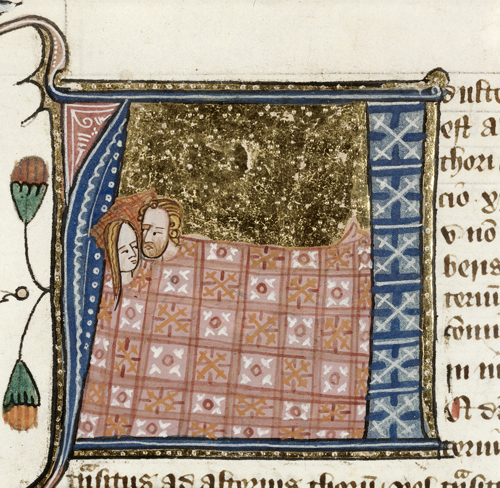The first few weeks of 2014 have seen a flurry of media reports about the private lives of world leaders both past and present, from Bill Clinton and Tony Blair to François Hollande and Barack Obama. Such fascination with the alleged sexual exploits of political leaders is often assumed to be a modern phenomenon: modern voters like their politicians to be faithful to their wives, but medieval kings could have as many mistresses and bastards as they pleased.

Many medieval rulers did enjoy extremely active sex lives. Henry I of England (1100-35) fathered at least twenty-two illegitimate children by a whole bevy of mistresses. He publically acknowledged these offspring, giving his sons titles and his daughters titled husbands. Henry II (1154-89), famed for his affair with Fair Rosamund, also acknowledged several bastards. One of them, Geoffrey, was raised with his father’s legitimate heirs, and later became royal chancellor and archbishop of York. And in the fifteenth century, Edward IV (1461-83) had several bastards and numerous mistresses, including the three women described by Thomas More as the merriest, the wiliest, and the holiest harlots in the realm.
Such examples support the widespread belief that it was not only socially acceptable for a medieval king to engage in pre-marital and extra-marital sex, but positively expected that he would do so. Certainly the sexual behaviour of royal men was not subject to the intense scrutiny faced by royal women, because a king’s bastards did not threaten the succession. Queenly adultery undermined the legitimacy of the entire dynasty- which is why women such as Anne Boleyn had to go. Yet the existence of this double standard did not mean that male sexual behaviour went unscrutinised.
Indeed, there were many reasons why a king’s sex life could be problematic. The problem was partly a moral one. Lust was a deadly sin, and churchmen were particularly vocal critics of royal fornication. But there were also practical concerns. Sex could distract the king from the business of ruling- as in the case of John (1199-1216), who allegedly stayed in bed with his new queen whilst Normandy was lost. It could sour the king’s relations with the nobility: John’s behaviour towards the wives and daughters of his leading subjects made him many powerful enemies. There were also concerns about the potential influence of mistresses. Alice Perrers, mistress of Edward III (1327-77), was described by one chronicler as ‘that unspeakable whore who always satisfied all his desires of the flesh’. In return she received so many favours that many wondered whether she had bewitched the king.
To be in the thrall of such a woman also undermined the king’s masculinity: how could Edward III be a proper man if he was ruled by his physical appetites? Self-restraint was central to medieval masculinity, and a king’s ability (or inability) to control his body was thought to be a sign of his ability (or inability) to control the body politic. The connection was not merely symbolic, since the health of the male body was thought to rest on the balance of bodily fluids, including semen. To remain healthy, a king needed to have regular sex- but too much would render him both physically and mentally weak, and thus unfit to rule.
Ultimately, in the Middle Ages as today, popular attitudes to the sex lives of rulers were ambiguous, and heavily influenced by politics. In well-regarded leaders promiscuity may be excused or even celebrated, but in unpopular rulers it becomes a significant failing, indicative of serious character flaws. Whether factual or fabricated, stories about the sex lives of kings and politicians can have powerful effect on our perceptions of our rulers- both medieval and modern.
 Katherine Harvey is an Associate Lecturer at Birkbeck College, University of London where her research focuses on the pre-Reformation English episcopate. Her first book, Episcopal Appointments in England c.1214-1344, was published by Ashgate in January 2014. Katherine’s current project combines ecclesiastical history with the history of gender, sexuality and medicine. She tweets from @keharvey2013
Katherine Harvey is an Associate Lecturer at Birkbeck College, University of London where her research focuses on the pre-Reformation English episcopate. Her first book, Episcopal Appointments in England c.1214-1344, was published by Ashgate in January 2014. Katherine’s current project combines ecclesiastical history with the history of gender, sexuality and medicine. She tweets from @keharvey2013

NOTCHES: (re)marks on the history of sexuality is licensed under a Creative Commons Attribution-NonCommercial-NoDerivatives 4.0 International License.
Based on a work at www.notchesblog.com.
For permission to publish any NOTCHES post in whole or in part please contact the editors at NotchesBlog@gmail.com





Pingback: John Rykener Revisited: Transvestite Male Prostitute or Biting Political Satire? | NOTCHES